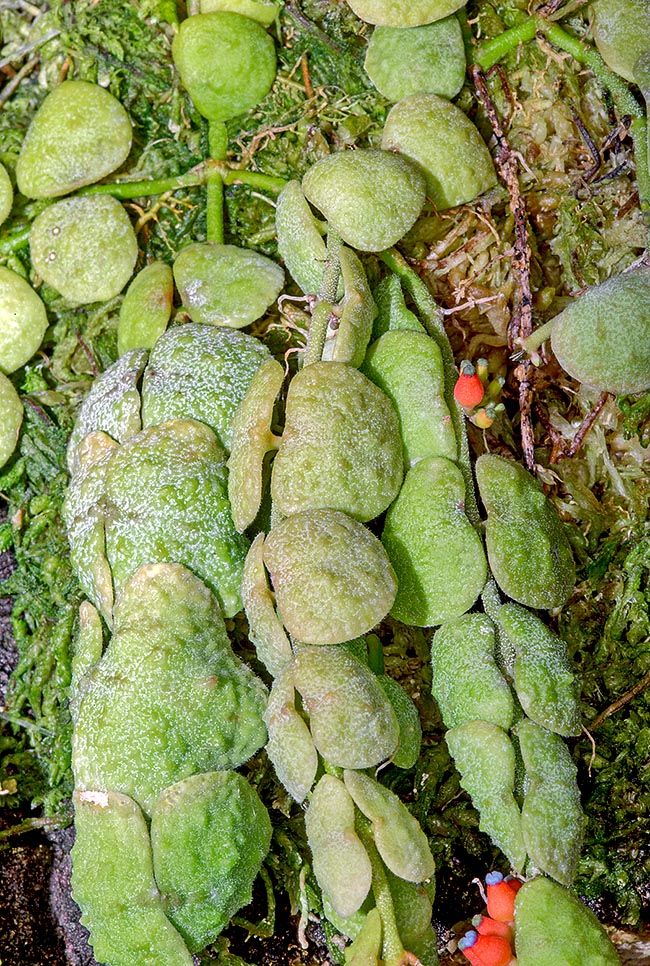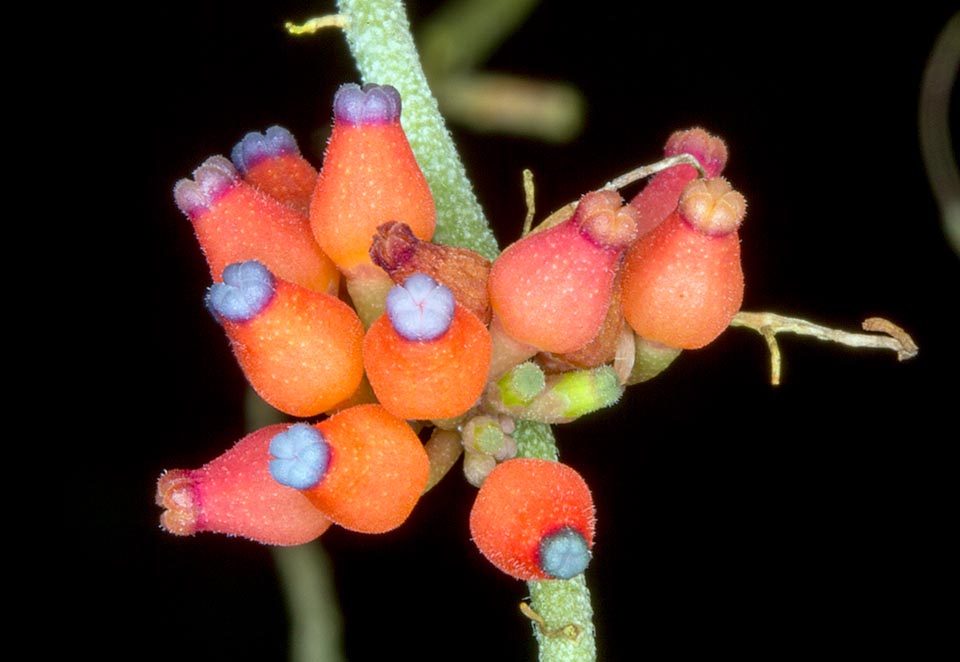Family : Apocynaceae

Text © Pietro Puccio

English translation by Mario Beltramini

The Dischidia cochleata is an epiphyte of South-East Asia with stems having milky sap and urbicular flesh leaves 2-3 cm broad, often overlapped, that offer to ants and other insects a precious shelter and a humid microenvironment © Giuseppe Mazza
The species is native to Borneo, Java, Malysia and Sumatra where it lives as epiphyte on the trees of the humid forests at low and medium altitudes.
The name of the genus comes from the combination of the Greek adverb “δίς” (dis) = twice and of the verb “σχίζω” (schizo) = to separate, to divide, with reference to the bifid lobes of the staminal corona; the name of the species is the Latin adjective “cochleatus, a, um” = snail-shaped, with reference to the convex shape of the leaves similar to a shell.
The Dischidia cochleata Blume (1826) is an evergreen climbing epiphytic species with thin stems having milky sap, pubescent, rooting at the nodes. The leaves, on short petiole, are simple, opposite, orbicular, of 2-3 cm of diameter, fleshy, convex above, concave below, adherent to the support, of pale green colour and warty above, purple suffused below, tending to overlap.
With their particular shape the leaves, besides protecting the roots and creating a humid microenviromnment, offer a shelter to the ants and other insects. Subsessile inflorescences with few tiny fleshy flowers with urceolate corolla of orange red colour with 5 short blue lobes, 5 lobed corona with bifid apex shaped like an anchor, 5 stamens, with the filaments merged in a short column, and bilocular ovary. The fruits are fusiform follicles in pair containing numerous seeds provided at one extremity of a tuft of silky hairs that favour their dispersion through the wind.
It reproduces by seed, but usually at amateur level by cutting utilizing portions of stem, with 3-4 nodes, tied to branches or pieces of bark and placed in a luminous environment with high humidity and frequent nebulizations until rooted.
Little known species, may be grown outdoors exclusively in the tropical and humid subtropical climate zones, made climbing on the trunks of the trees in very luminous position, but not at the direct sun, elsewhere is to be kept in a very luminous environment with high temperatures, 20-32 °C, and humidity, 70-85 %, utilizing as support branches, pieces of bark or of roots of arborescent ferns, possibly lined with sphagnum in order to maintain the humidity; in absence of a rigid support the leaves tend to wrap on themselves.

The inflorescences of this small little known climber, difficult to grow in non-tropical climates, surprise for the tiny red-orange flowers with 5 short blue lobes © G. Mazza
If the environment is too dry, nebulize frequently on the morning with non-calcareous water at room temperature. Particularly suitable for humid tropical terraria where it may get all the cares it needs.
Synonyms: Dischidia coccinea Griff. (1854).
→ To appreciate the biodiversity within the APOCYNACEAE family please click here.
